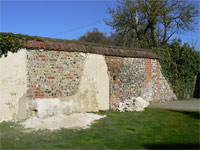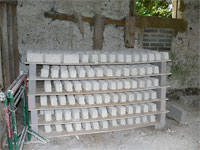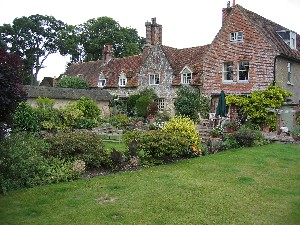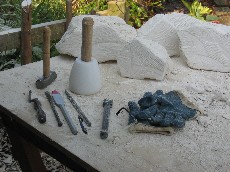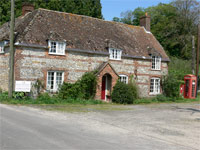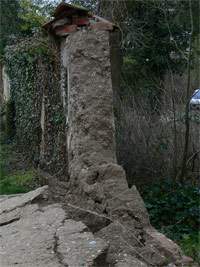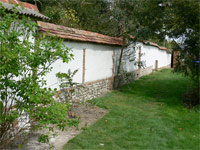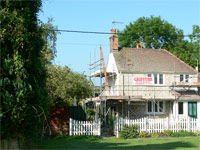Re-pointing Masonry
A classic brick and flint cottage. Our work here was to selective areas of pointing to the walls and chimney. We often find that where old lime mortar has been untouched it is in good condition but the areas that have been re-pointed badly with cement, need repair. We believe that repairs should only be done where needed and that re-pointing whole sides for unity is wrong. It is quite possible to match old lime mortars for colour and texture. We specialise in doing this.
The photos below shows how the use of the right aggregates and finishing techniques can help match the old and new mortars and thus avoid damage to large sections of beautiful old mortar, the historic fabric of the building, by pointing whole sections.
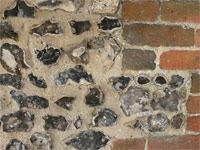
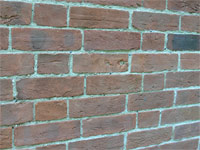
There were some cob wall collapses to be repaired in 2009, here is an example where several sections of wall needed to be rebuilt.
The second photo shows the finished wall.
Re-pointing of a stone fronted cottage, having taken off the cement render to allow the walls to breathe. Although not listed, debate was had as to whether to replace with a lime render, re-point and give a lime wash or leave the over-full pointing exposed. The client chose the latter. We like the technique of filling the pointing almost flat with the bumpy stonework; is it render or pointing? Well 50/50 we suggest and not out of keeping for N Wiltshire.
A lovely chalk cob barn in need of attention, but the owner wanted time to think about it. Sadly the winter brought those thoughts forward.
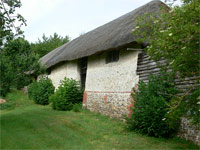
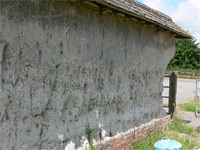
It is often the end of a cob wall that is the most vulnerable. These photos show a chalk cob block repair near Salisbury. Although the wall had been rendered with lime many years ago, it had not had any maintenance recently. This has become the new 'Wiltshire Vernacular'. We therefore decided that no unifying render would be applied. Like for like repairs were carried out and the patched look accepted as an honest repair.
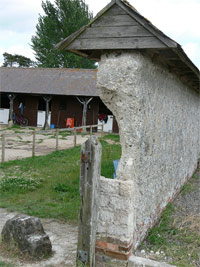
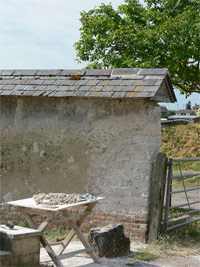
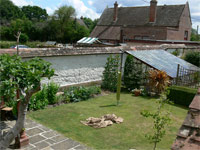
This repair was very interesting. The chalk walls and plinths were repaired in the normal like for like way. The view taken was that the bumpy walls show that this is a cob wall and yet some protection is needed. My hand rendering techniques proved to be useful again.
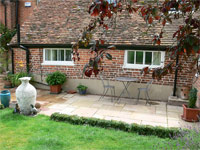
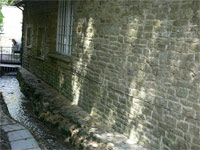
Two re-pointing jobs above.
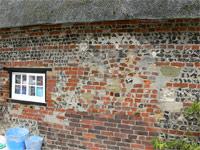
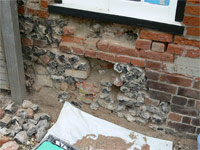
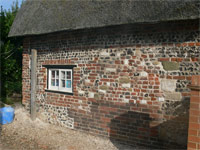
The three photos above show a classic Wiltshire brick, flint and chalk cottage which had been badly repaired with cement over several years. The result was severe spalling of the bricks and dampness inside the cottage. Great time and care is needed for these repairs to get the balance between doing enough and yet avoiding too much total re-building.The cottage wall started as a rubble wall, has had many alterations and we believe it still tells all these tales now when you look at it.
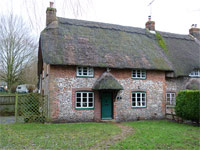
This cottage was also very damp inside. It need almost 70% repointing but the result was very pleasing. We did leave examples of two colours of old lime mortar but removed all the cement. Inside, 60% of the walls were taken back to the masonry and given a lime plaster. The rear walls and the interiors were treated with mineral paints which we are now using in preference to limewashes and distempers in the right situation.
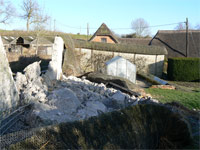
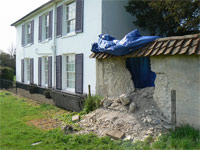
Below a cob wall has almost fallen and we were able to rescue the situation; and the photos further below show a beautiful flint and brick wall that we rebuilt.
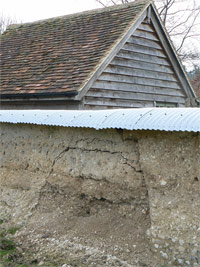
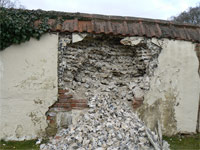
This wall can certainly be read to tell the story of change over the years. The pity is that the roof tiles do not have a sufficient drip line and so on-going maintenance is anticipated unless this is also addressed.
